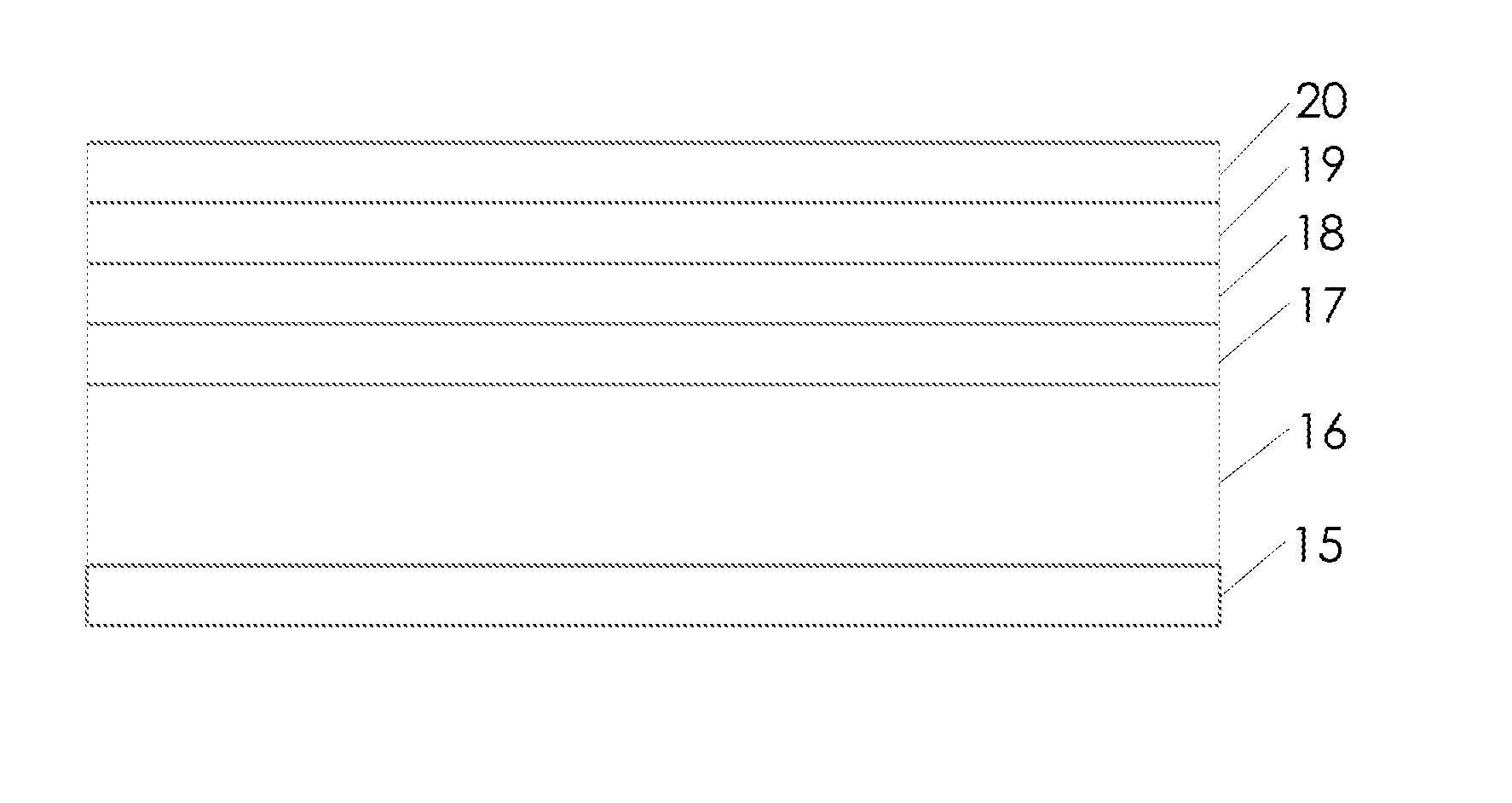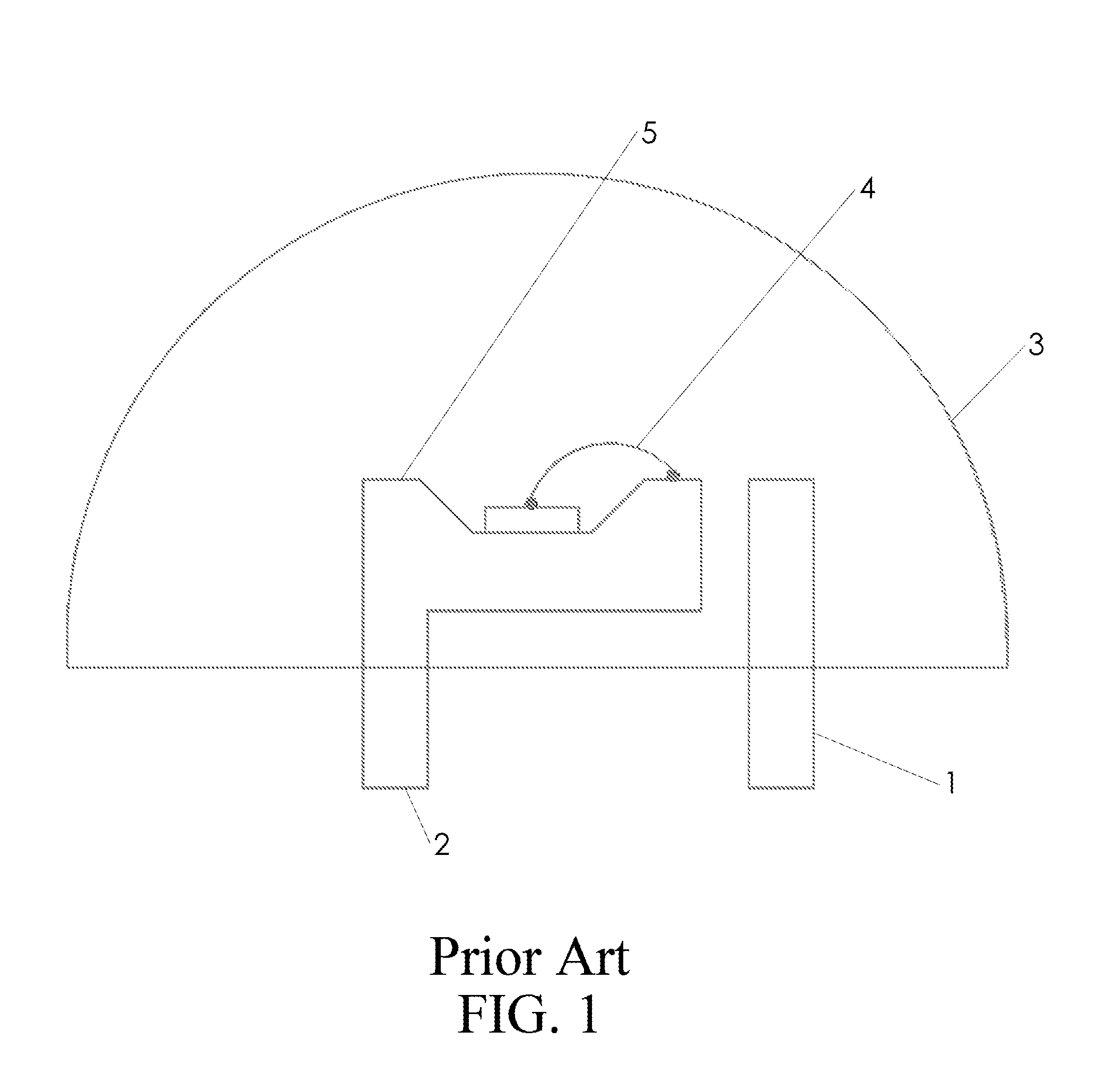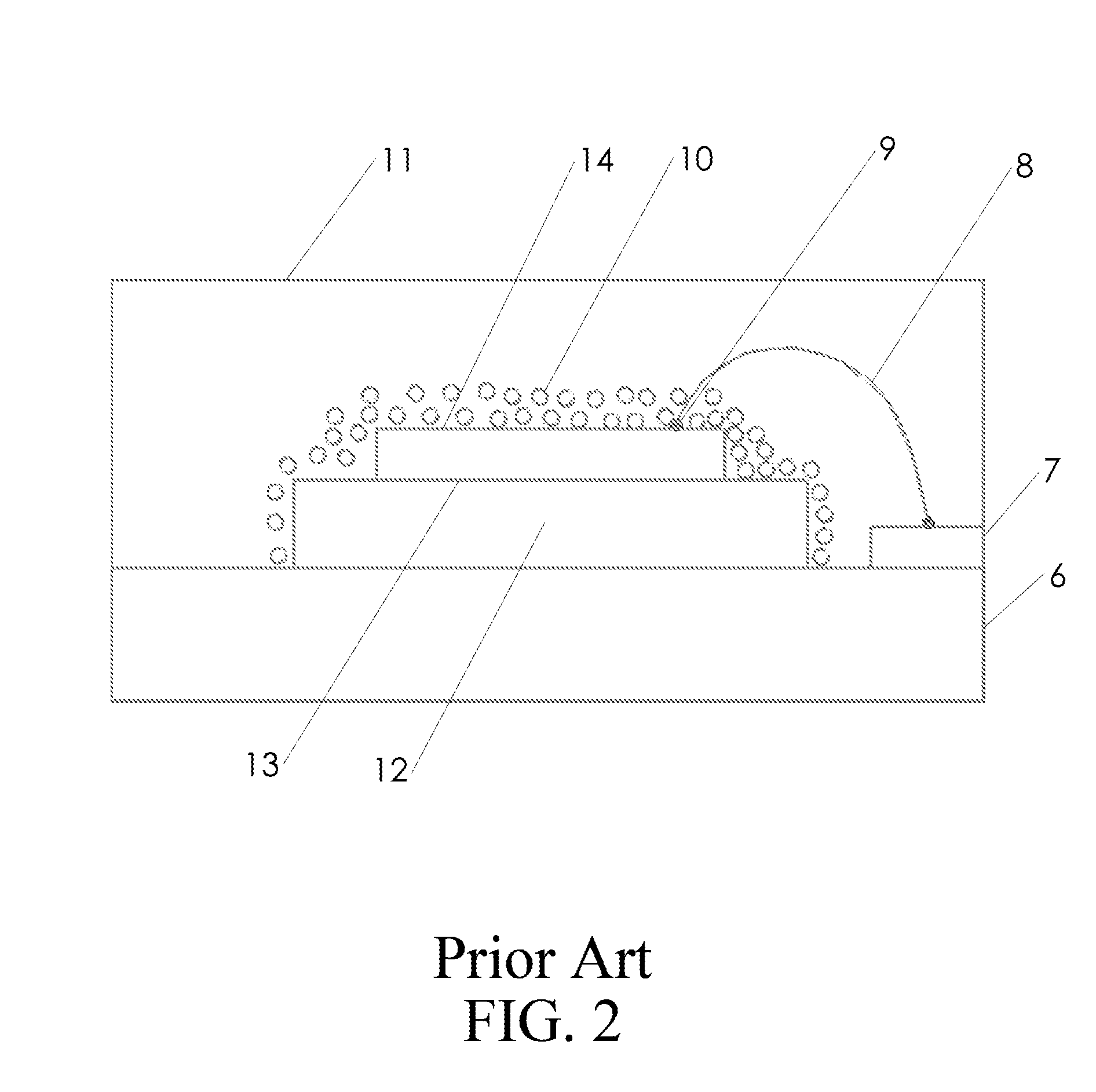Rapid fabrication methods for forming nitride based semiconductors based on freestanding nitride growth substrates
a technology of freestanding nitride and fabrication methods, which is applied in the direction of semiconductor lasers, lasers, solid-state devices, etc., can solve the problems of limiting the type of subsequent metal contacts that can be used, the cost and performance levels are insufficient for general lighting applications, and the effect of preventing solarization, yellowing and other degradation effects
- Summary
- Abstract
- Description
- Claims
- Application Information
AI Technical Summary
Benefits of technology
Problems solved by technology
Method used
Image
Examples
Embodiment Construction
[0027]FIG. 1 depicts a standard LED. LED die 5 is typically mounted to contact pin 2 via a conductive epoxy. Wire bond 4 makes a connection between LED die 5 and contact pin 1. When a voltage is applied between contact pin 2 and contact pin 1, the LED die 5 emits light. Typically an organic encapsulant 3 surrounds the entire assembly to protect wire bond 4, environmentally protect the assembly, and improve light extraction and / or impart directionality to the emitted light from LED die 5. This approach is limited in its usage to low current applications due to the lack of thermal cooling and die size limitations. Organic encapsulants typically exhibit thermal conductivity less than 0.1 w / m / K.
[0028]FIG. 2 depicts a typical white LED. Active region 14 is waferbonded via a solder 13 to LED substrate 12. Submount 6 provides thermal spreading and interconnect means for the assembly. Heat generation is localized in active region 14 and propagates through solder 13 through LED substrate 12 ...
PUM
| Property | Measurement | Unit |
|---|---|---|
| thickness | aaaaa | aaaaa |
| thick | aaaaa | aaaaa |
| thick | aaaaa | aaaaa |
Abstract
Description
Claims
Application Information
 Login to view more
Login to view more - R&D Engineer
- R&D Manager
- IP Professional
- Industry Leading Data Capabilities
- Powerful AI technology
- Patent DNA Extraction
Browse by: Latest US Patents, China's latest patents, Technical Efficacy Thesaurus, Application Domain, Technology Topic.
© 2024 PatSnap. All rights reserved.Legal|Privacy policy|Modern Slavery Act Transparency Statement|Sitemap



